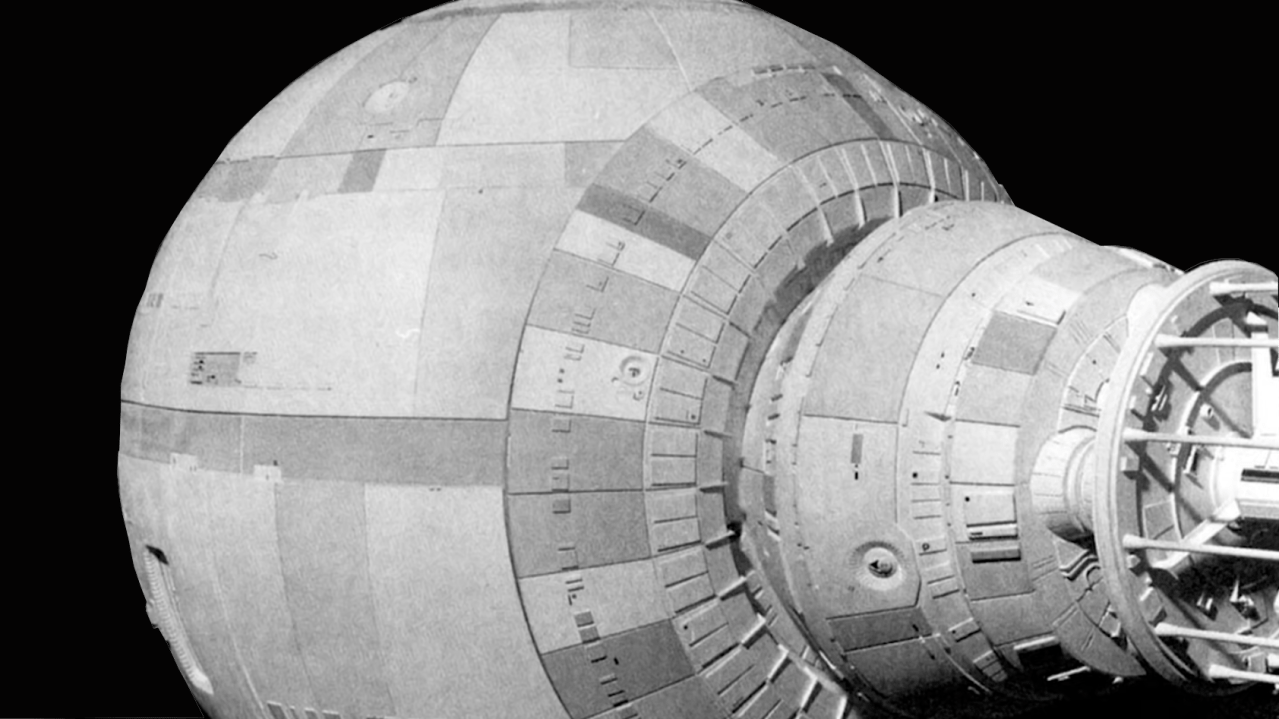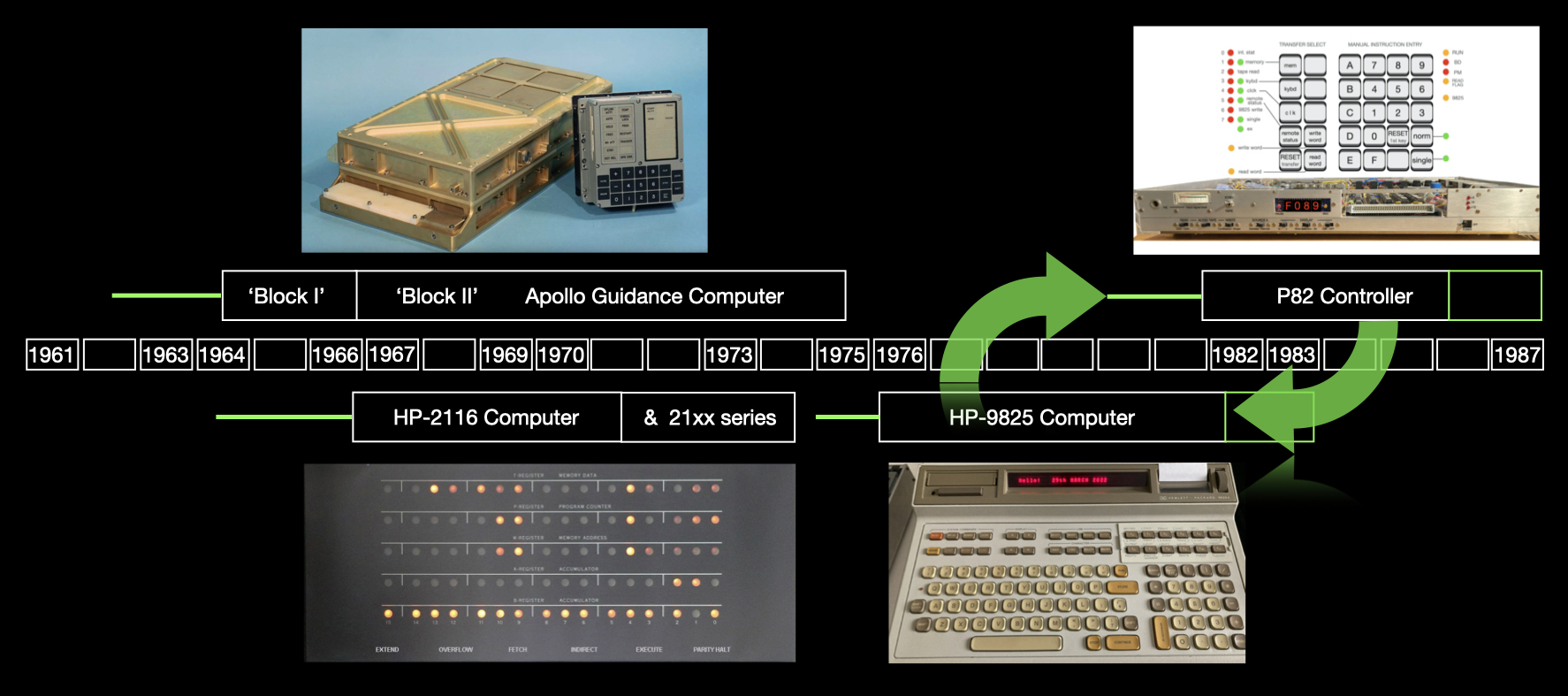Overview of this multi-part exposé — video part three] [back to INDEX]
Reality
Moon landing computer technology and beyond – differences and similarities of two 1960’s developments and of our own 1980’s P82:
(1): 1969 moon landing —  project began in 1963, TTL IC logic and core memory. Human interface was the “DSKY” – display and keyboard. This was the Apollo guidance Control computer or AGC. There were no printed circuit boards. The logic sections were built of double 3-input NOR gates assembled in modules of 120 IC’s (= 240 gates) welded to 4 rows of connection pins
project began in 1963, TTL IC logic and core memory. Human interface was the “DSKY” – display and keyboard. This was the Apollo guidance Control computer or AGC. There were no printed circuit boards. The logic sections were built of double 3-input NOR gates assembled in modules of 120 IC’s (= 240 gates) welded to 4 rows of connection pins
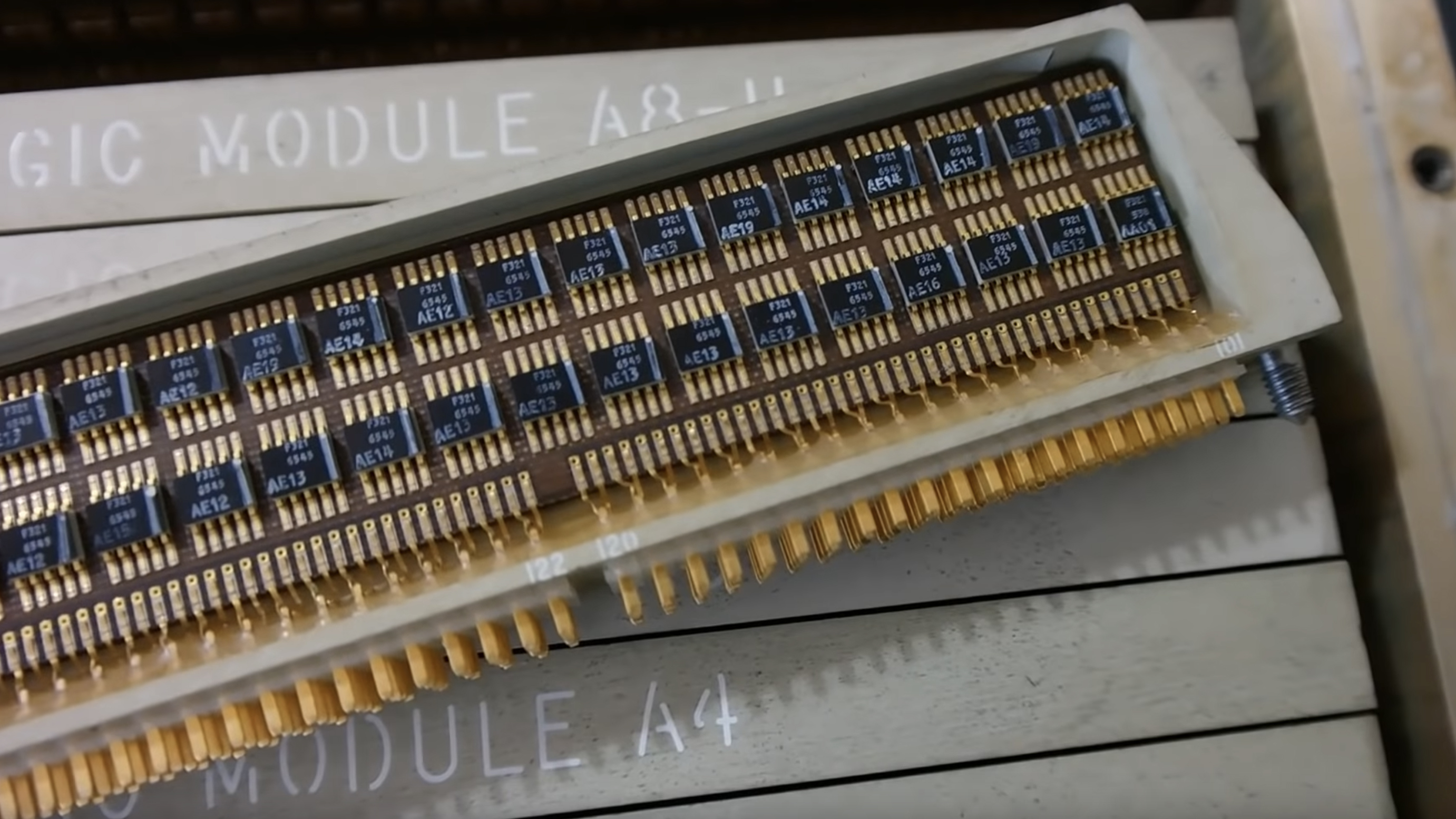
Each such module had thus no inherent functionality until plugged into the back-plane. Functionality was determined by the wire-wrapping connections of the back-plane which in fact connected each of the individual NOR gates into operational logic circuitry. The I/O functionality to connect to the many controls and status of the space craft was very specific, sometimes simple in nature, yet totally real time — incorporating sophisticated interrupt, prioritizing and sharing approaches.
(2): 1969 HP2116 computer — 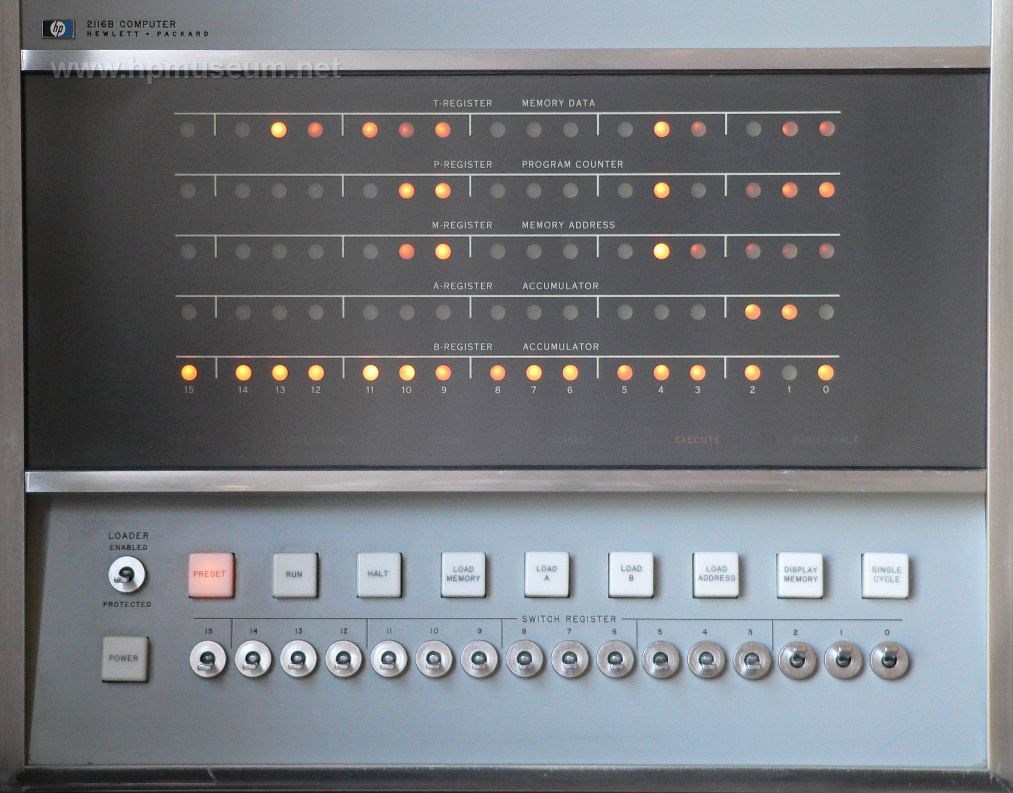 project began in 1963, CTL IC’s with multi-gate logic and core memory. Human interface was the teletype, switch register and panel lights. Dual-sided PC boards, each with specific functionality, plugged into wire-wrap back-plane. Extensive I/O designed with priority interrupt servicing for interfacing to external equipment in a real-time environment. It was one of the very first 16-bit commercial computers; introduced as an instrument controller, but became so much more.
project began in 1963, CTL IC’s with multi-gate logic and core memory. Human interface was the teletype, switch register and panel lights. Dual-sided PC boards, each with specific functionality, plugged into wire-wrap back-plane. Extensive I/O designed with priority interrupt servicing for interfacing to external equipment in a real-time environment. It was one of the very first 16-bit commercial computers; introduced as an instrument controller, but became so much more.
(3): 1982 P82 project by marcomathieumedia —  CMOS IC’s with multi-function logic and small solid state memory. Human interface was similar to the AGC, meaning a chunky keyboard and a display (4 digits plus LEDs). IC’s are typically higher in density than the 2116. However IC’s are inserted into sockets which use back-plane wire-wrap as in the AGC.
CMOS IC’s with multi-function logic and small solid state memory. Human interface was similar to the AGC, meaning a chunky keyboard and a display (4 digits plus LEDs). IC’s are typically higher in density than the 2116. However IC’s are inserted into sockets which use back-plane wire-wrap as in the AGC.
P82 was a programmable controller, rather than a computer. Major comparisons illustrated here are with the logic generation used, the human interface, and the wire-wrap back-plane build method.
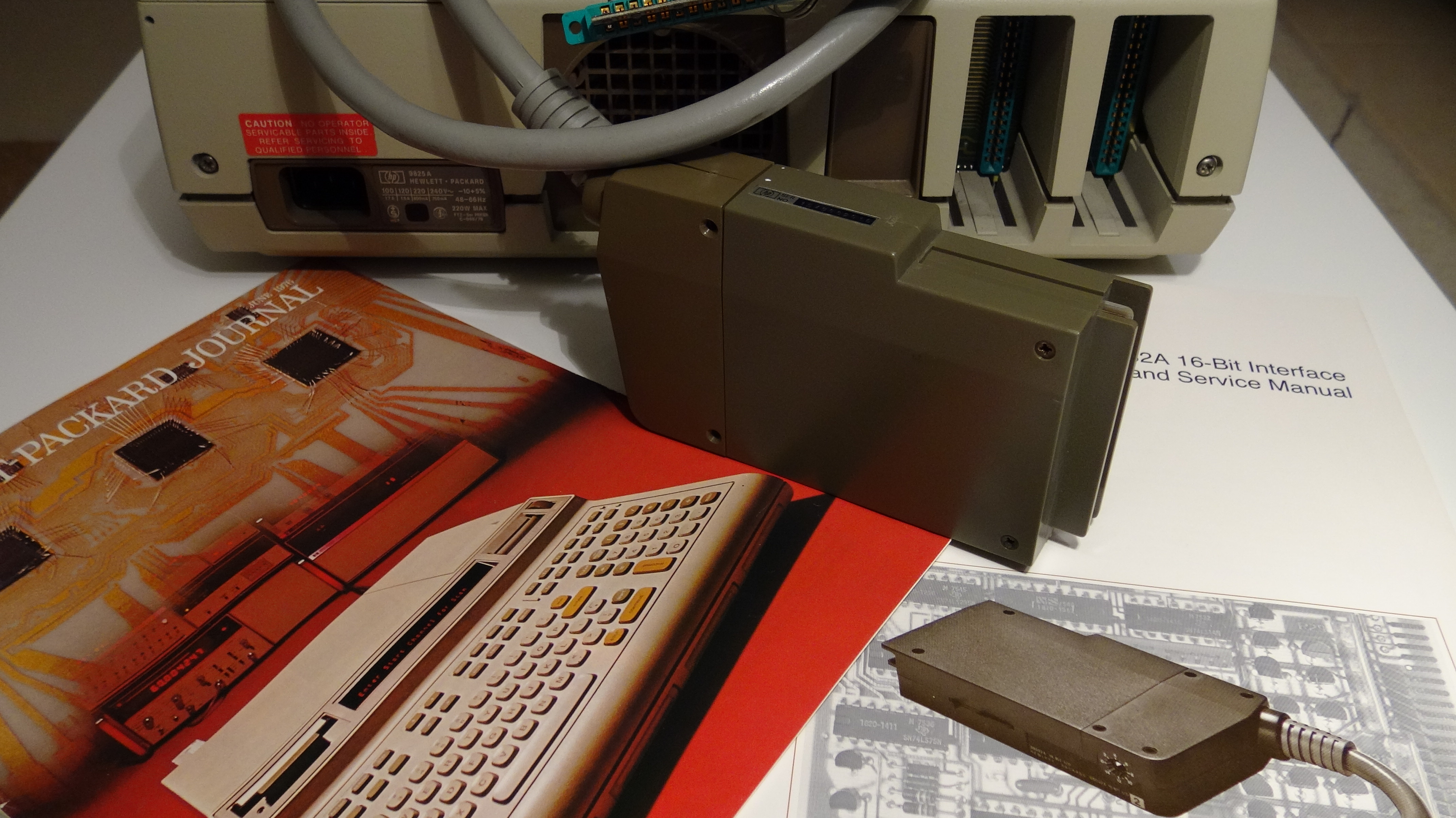 In addition, the HP9825 desk top computer was used extensively during design and prototyping of the P82, and as an integral part of its optional operational capabilities. The HP9825 was a powerful instrument controller in its own right using its own (HPL) high level programming language, yet capable of precise timing and bit control from the I/O section. In fact 9825 was built around a proprietary NMOSII 16-bit processor (24,000 transistors) about 10 years ahead of its time. It hosted similar register instructions and I/O architecture to that of the 2116. It cost us over CHF 13,000.- in 1976.
In addition, the HP9825 desk top computer was used extensively during design and prototyping of the P82, and as an integral part of its optional operational capabilities. The HP9825 was a powerful instrument controller in its own right using its own (HPL) high level programming language, yet capable of precise timing and bit control from the I/O section. In fact 9825 was built around a proprietary NMOSII 16-bit processor (24,000 transistors) about 10 years ahead of its time. It hosted similar register instructions and I/O architecture to that of the 2116. It cost us over CHF 13,000.- in 1976.

We include mention also of the HP85 personal computer introduced in 1979 uniquely to remind us all of the human interface limitations still around at that time and to show that, even in 1982, the small CRT remained one of the few cost-effective and space-efficient display options. The HP85 was a very successful machine but was retired in 1984 as the IBM PC drove standards and compatibility.
Kubrick’s film “2001 space odyssey” is later added to this exposé as it was being developed at the same time as the AGC and the 2116, attempting to predict computer and space technology 35 years ahead.
Fascinating comparisons of reality and imagination.
